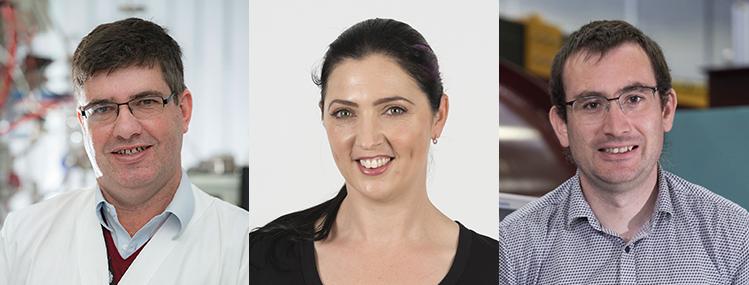Three ANSTO scientists are contributing to two recently awarded Australian Research Council Discovery Project grants.
Dr Anthony Duff of the National Deuteration Facility and Dr Anton Le Brun of the Australian Centre for Neutron Scattering are partner investigators with Professor Halim Kusumaatmaja of Durham University (UK) and Chief Investigators Dr Richard Morris (UNSW) and Dr David Jacques on a project to study The geometry of genome access: Lessons from HIV with funding of $624,720.

Access to the cell's nucleus, and hence its genome, is of deep scientific and commercial significance. It is controlled by a phase-separated diffusion barrier within the nuclear pore complex.
Recent evidence, however, has shown that HIV can cross this barrier with its protective capsid intact, despite it being over one thousand times larger than the limit for passive transport. Combining concepts from soft-matter physics with recombinant assays, this project aims to uncover the link between the unique geometry of HIV capsids and their ability to subvert the nucleus' defences.
The expected outcome is a step-change in the understanding of nuclear access control, with downstream benefits to virology, bio-engineering and biotechnology.
To study the penetration of the HIV capsid into the nuclear pore complex, a series of neutron reflectometry experiments are planned at ANSTO's Australian Centre for Neutron Scattering. In the first, scheduled for early 2024, deuterated HIV capsids will be added to a monolayer of the polypeptides that fill the nuclear pore channel to reveal the depth to which the capsid initially sinks.
Professor Vanessa Peterson is a co-investigator with Dr Nana Wang, Professor Jiazhao Wang, Dr Germanas Peleckis, Professor Hua Liu, all of the University of Wollongong; and Associate Professor Hansu Kim of Queen's University (Canada) on a project to investigate Electrolyte and interface engineering of solid-state sodium batteries with funding of $433,552.
This project aims to develop large-scale solid-state sodium-ion batteries exhibiting better safety compared to classic liquid electrolyte batteries without compromising on performance.
This will be achieved by novel engineering of solid-state electrolytes and electrolyte-electrode interfacing by a fundamental understanding of sodium-ion transport using statistical and machine-learning techniques.
Expected outcomes include an understanding of ion-transport mechanisms in batteries, delivery of advanced solid-state electrolytes with high ionic conductivity, and batteries with excellent performance and safety characteristics, which benefit Australia's environment and sustainability.






